Sri Lanka Leopard Safaris
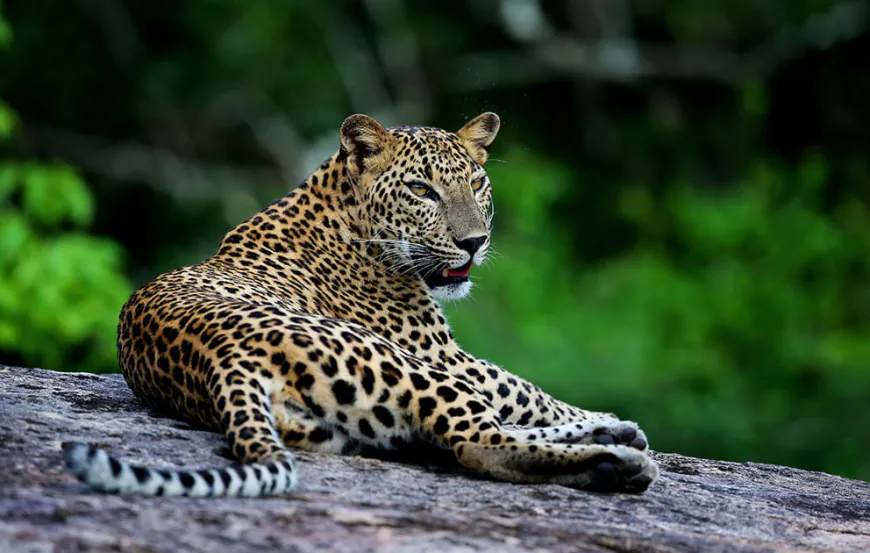
-
Discover Leopard Country
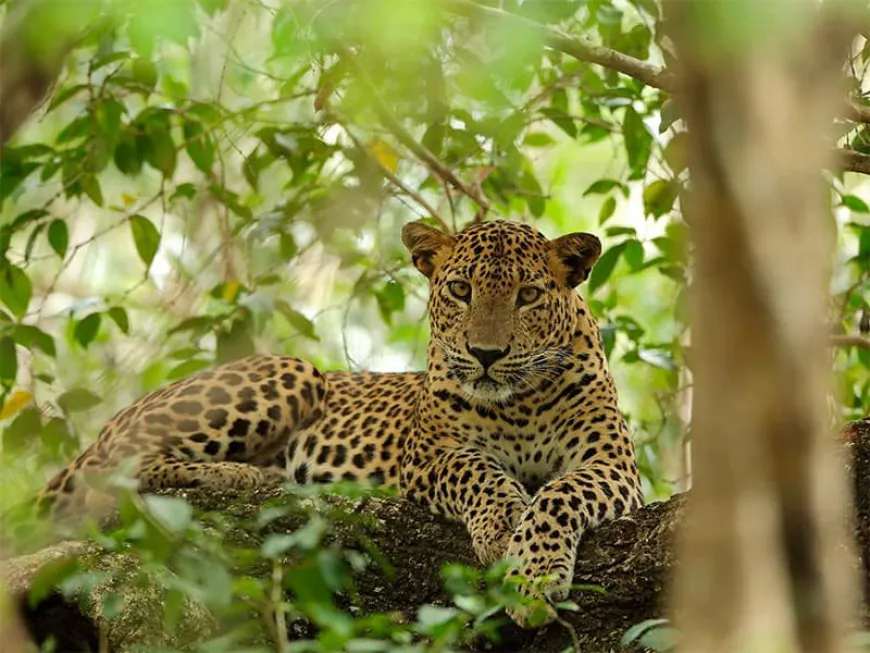
Leopard safaris in Sri Lanka offer a unique opportunity to observe these elusive big cats in their natural habitat, with Yala National Park boasting one of the highest densities of leopards in the world. Visitors can experience luxury tented camps, expert-guided jeep tours, and sustainable wildlife viewing practices while exploring the diverse ecosystems of Sri Lanka's national parks.
Sri Lanka has emerged as a premier destination for leopard safaris, offering wildlife enthusiasts unparalleled opportunities to observe these majestic big cats in their natural habitat. The island nation boasts one of the highest leopard population densities globally, particularly in renowned national parks such as Yala and Wilpattu. This concentration of leopards, combined with Sri Lanka's diverse ecosystems and well-established safari infrastructure, creates an ideal environment for memorable wildlife encounters.
The Sri Lankan leopard (Panthera pardus kotiya) is an endemic subspecies, found exclusively on the island. These leopards inhabit various protected areas, including national parks, forests, and conservation zones. The country's rich biodiversity provides ample prey for leopards, including sambar deer and wild boar, contributing to a thriving ecosystem that supports healthy leopard populations.
Safari experiences in Sri Lanka are designed to be both immersive and responsible. Many operators prioritize sustainable and ethical practices, ensuring minimal disturbance to wildlife and their habitats. Experienced guides and naturalists lead safari drives, utilizing their expertise to track and locate leopards while educating visitors about the local flora and fauna.
Accommodation options for leopard safaris range from luxury tented camps to eco-lodges, often strategically located near national parks. For instance, some providers offer a glamping experience on private land bordering Yala National Park, featuring air-conditioned tents, eco-friendly swimming pools, and carefully landscaped surroundings that blend with the natural environment.
Conservation efforts play a crucial role in maintaining Sri Lanka's leopard population. These initiatives include establishing and maintaining protected areas, conducting research on leopard behavior and ecology, implementing human-leopard conflict mitigation strategies, and enforcing anti-poaching laws. Collaboration between government agencies, international organizations, and local communities has strengthened these conservation efforts, contributing to the country's status as a top leopard-watching destination.
While Yala National Park is renowned for its high leopard density, other locations such as Wilpattu National Park, Udawalawe National Park, Horton Plains National Park, and Knuckles Conservation Forest also offer opportunities for leopard sightings. However, it's important to note that leopard sightings are inherently unpredictable due to the elusive nature of these animals, and patience is often required for successful encounters.
-
Yala's Leopard Ecosystem
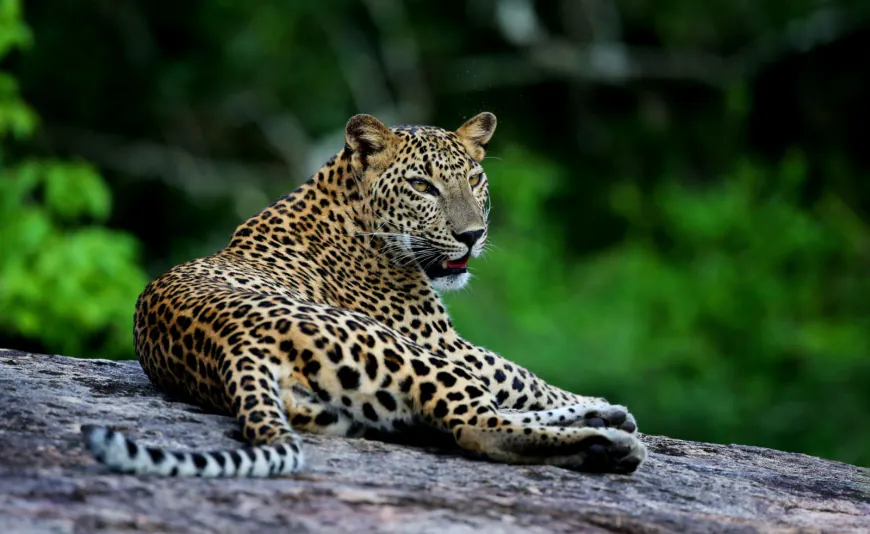
Leopard safaris in Sri Lanka offer a unique wildlife experience, with Yala National Park being a prime destination for observing these elusive big cats. The following table provides an overview of key aspects of leopard safaris in Sri Lanka and highlights the importance of leopards in Yala's ecosystem:
Aspect Details Prime Location Yala National Park, spanning over 96,000 hectares across 5 blocks or sectors Leopard Density One of the highest in the world, making it the best destination to see leopards in the wild Leopard Population Over 100 individual leopards identified in Block 1 of Yala over 5 years Ecosystem Diversity Ranges from shrub jungles with thorny bushes to dual-layered riparian gallery forests Other Wildlife Home to the Ceylon Big Five: elephants, leopards, bears, wild water buffalos, and wild boars Birdlife Over 200 species of resident birds, with additional hundreds of migrant and vagrant species in winter months Safari Experience Guided jeep safaris with expert naturalists and customized vehicles Accommodation Luxury glamping experiences with air-conditioned tents and eco-friendly facilities Conservation Focus Sustainable and ethical safari practices to minimize disturbance to wildlife and habitats Leopards play a crucial role in Yala's ecosystem as apex predators. Their presence helps maintain the balance of prey populations, particularly species like sambar deer and wild boar. This balance is essential for the overall health of the ecosystem, preventing overgrazing and maintaining plant diversity. The high density of leopards in Yala is indicative of a thriving ecosystem with sufficient prey and suitable habitats.
The leopard's status as a flagship species also contributes to conservation efforts in the region. Their popularity among tourists drives eco-tourism, which, when managed responsibly, can provide economic incentives for local communities to support conservation initiatives. This, in turn, helps protect not only leopards but also the entire ecosystem they inhabit.
Research conducted on leopards in Yala has provided valuable insights into their behavior, population dynamics, and habitat requirements. This knowledge is crucial for developing effective conservation strategies and managing human-wildlife conflicts in the surrounding areas. The collaborative research efforts that have identified and profiled individual leopards in Block 1 of Yala demonstrate the importance of long-term studies in understanding and protecting these magnificent creatures.
It's worth noting that while Yala is renowned for its leopard population, other national parks in Sri Lanka, such as Wilpattu, also offer opportunities for leopard sightings. However, as with all wildlife encounters, sightings cannot be guaranteed, and patience is often required for successful observations.
-
Peak Leopard Viewing Seasons
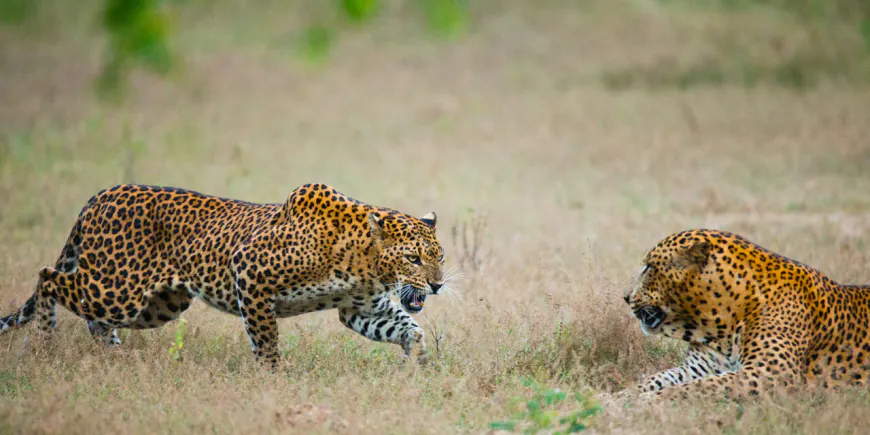
The best times for leopard safaris in Sri Lanka are influenced by seasonal weather patterns and animal behavior. Here's a breakdown of the optimal periods and considerations for planning your leopard safari:
Season Months Conditions Leopard Sighting Potential Dry Season February to October Low rainfall, animals gather near water sources Excellent Peak Season December to March, July to August Busy, crowded parks Good, but crowded Monsoon Season May to July (Southwest), October to January (Northeast) Heavy rainfall, animals take shelter Poor Off-Peak Season April to June, September to November Less crowded, variable weather Good The dry season, particularly from February to October, is generally considered the best time for leopard safaris in Sri Lanka. During these months, the lack of rainfall causes water sources to become scarce, prompting animals, including leopards, to congregate around remaining water bodies. This concentration of wildlife increases the chances of leopard sightings.
April is highlighted as an excellent month for leopard safaris, as the heat begins to build, mirroring conditions favorable for big cat sightings in other regions like India. The period from March to October is particularly recommended for leopard safaris, with the elephant gathering at Minneriya National Park being an additional wildlife spectacle during this time.
However, it's important to note that Yala National Park, a prime location for leopard sightings, is typically closed for the entire month of September and the first two weeks of October. This closure allows animals to freely wander in search of water during the driest period.
For optimal viewing conditions, early morning (6:00 AM to 9:00 AM) and late afternoon (3:00 PM to 6:00 PM) safaris are recommended. These times coincide with periods of increased leopard activity and offer the best light for photography.
While peak seasons (December to March, July, and August) offer good sighting opportunities, they also bring crowds, which can detract from the safari experience. Off-peak seasons, though less crowded, may have more variable weather conditions.
It's crucial to remember that leopard sightings are never guaranteed, regardless of the season. Factors such as the animals' elusive nature, park regulations, and luck all play a role in successful sightings. Patience and realistic expectations are key to enjoying a leopard safari in Sri Lanka.
-
Leopard Tracking Hotspots
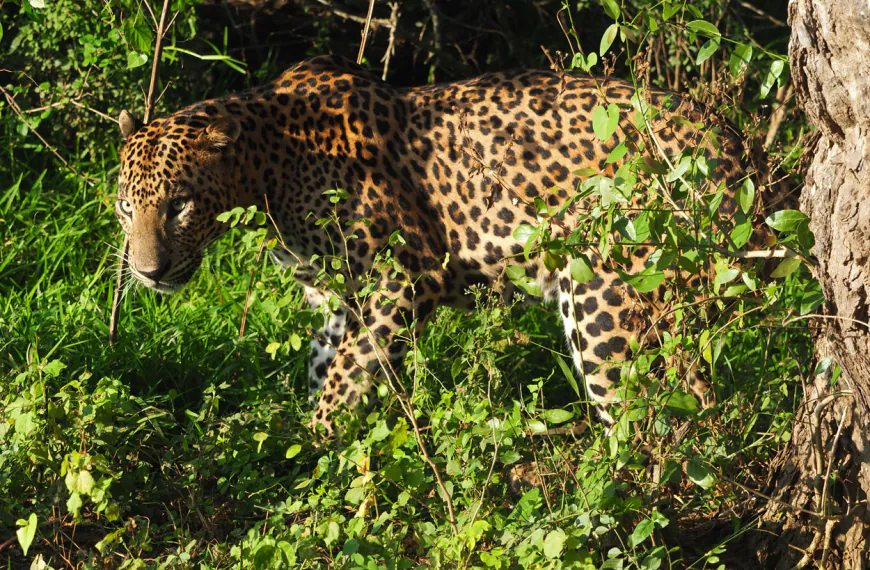
-
Leopard Safari Success Strategies
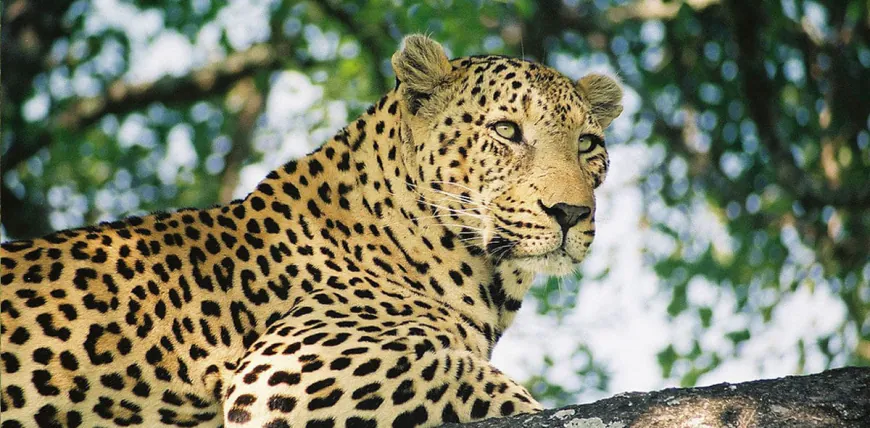
A successful leopard safari requires careful preparation and adherence to best practices. Here's a guide to help you make the most of your leopard-spotting adventure:
What to Bring Purpose Binoculars For distant wildlife viewing Camera with zoom lens To capture leopard sightings Neutral-colored clothing To blend in with surroundings Hat and sunglasses For sun protection Insect repellent To ward off mosquitoes and other insects Water bottle To stay hydrated during long safaris Snacks For energy during extended drives Field guide To identify various wildlife species When packing for your safari, prioritize items that will enhance your viewing experience and protect you from the elements. Binoculars are essential for spotting distant wildlife, while a camera with a good zoom lens will help you capture memorable leopard sightings. Wear neutral-colored clothing to blend in with the surroundings and avoid attracting unnecessary attention from wildlife.
Best practices for leopard sightings:
- Be patient: Leopards are elusive creatures, and sightings often require patience. Stay alert and scan the environment continuously.
- Listen to your guide: Experienced guides are skilled at spotting subtle clues that may indicate a leopard's presence. Pay attention to their instructions and insights.
- Respect wildlife: Maintain a safe distance from animals and never attempt to approach or feed them. This ensures both your safety and the well-being of the wildlife.
- Stay quiet: Minimize noise during your safari to avoid startling animals. Speak in hushed tones and avoid sudden movements.
- Optimal timing: Plan your safaris for early morning or late afternoon when leopards are most active. In summer, morning safaris are generally better, while in winter, evening safaris may yield more sightings.
- Use proper camera settings: Keep your camera in semi-automatic mode to quickly capture unexpected leopard appearances. Consider using aperture priority mode with center focus for best results.
- Bring a lens hood: This protects your camera lens during bumpy jeep rides and helps prevent lens flare.
- Book multiple safaris: If possible, plan for more than one safari to increase your chances of a leopard sighting. Two to three safaris are recommended for optimal opportunities.
- Choose the right park: While Yala National Park is known for its high leopard density, consider visiting less crowded parks like Wilpattu for a more serene experience.
- Manage expectations: Remember that wildlife sightings are never guaranteed. Enjoy the overall safari experience, including other wildlife and landscapes.
By following these tips and best practices, you'll maximize your chances of a successful leopard sighting while ensuring a responsible and enjoyable safari experience in Sri Lanka.
-
Leopard Habitat and Hunting
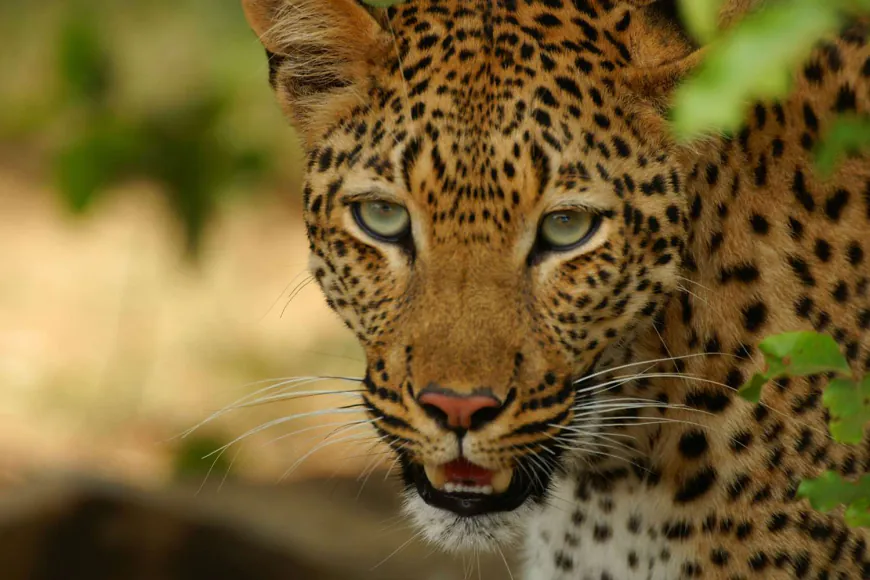
Scientific Name
Panthera pardusPhysical Description
Length of 92-183 cm with a 66-102 cm long tail and a shoulder height of 60-70 cm. Males weigh 30.9-72 kg, females 20.5-43 kg.Evolutionary Origin
Evolved in Africa during the Early Pleistocene and migrated to Eurasia during the Early-Middle Pleistocene transitionUnderstanding leopard behavior is crucial for successful safari experiences and conservation efforts. Here's an overview of leopard habitat preferences, territorial behavior, and hunting patterns:
Habitat and Territory:
- Adaptable to diverse environments, from rainforests to arid areas
- Prefer areas with dense vegetation for cover
- Territory size varies greatly depending on habitat and prey availability:
- Forested areas in Thailand: Males ~46 km², females ~26 km²
- Namibian farmlands: Males ~229 km², females ~179 km²
- South African Kalahari desert margins: Males ~2182 km², females ~489 km²
- Mark territory using scent and claw marks on trees
- Communicate through scent marking, which serves multiple functions:
- Advertising presence
- Indicating reproductive status
- Defining boundaries
Hunting Patterns:
- Primarily nocturnal hunters
- Rely on acute hearing and vision for hunting
- Prefer medium-sized prey (10-40 kg)
- Hunting strategy:
- Stalk prey, approaching as close as possible (typically within 5 m)
- Pounce and kill by suffocation
- Bite smaller prey on the back of the neck
- Hold larger animals by the throat to strangle them
- Often cache larger kills in trees or bushes to protect from scavengers
- Can drag prey weighing up to three times their own body weight
- Hunting success rate is generally low
Behavioral Characteristics:
- Solitary as adults, except during mating
- Crepuscular or nocturnal activity patterns
- Excellent climbers, often resting on tree branches
- Can run at speeds up to 58 km/h (36 mph)
- Avoid confrontation when possible
- Limited vocal repertoire, relying more on scent communication
- Cubs engage in play behavior, practicing hunting skills
Understanding these behavioral traits helps safari guides locate leopards and provides insights for conservation efforts. Leopards' adaptability and elusive nature contribute to their survival in various habitats, but also present challenges for human-leopard conflict management.
-
Leopard Photography Essentials
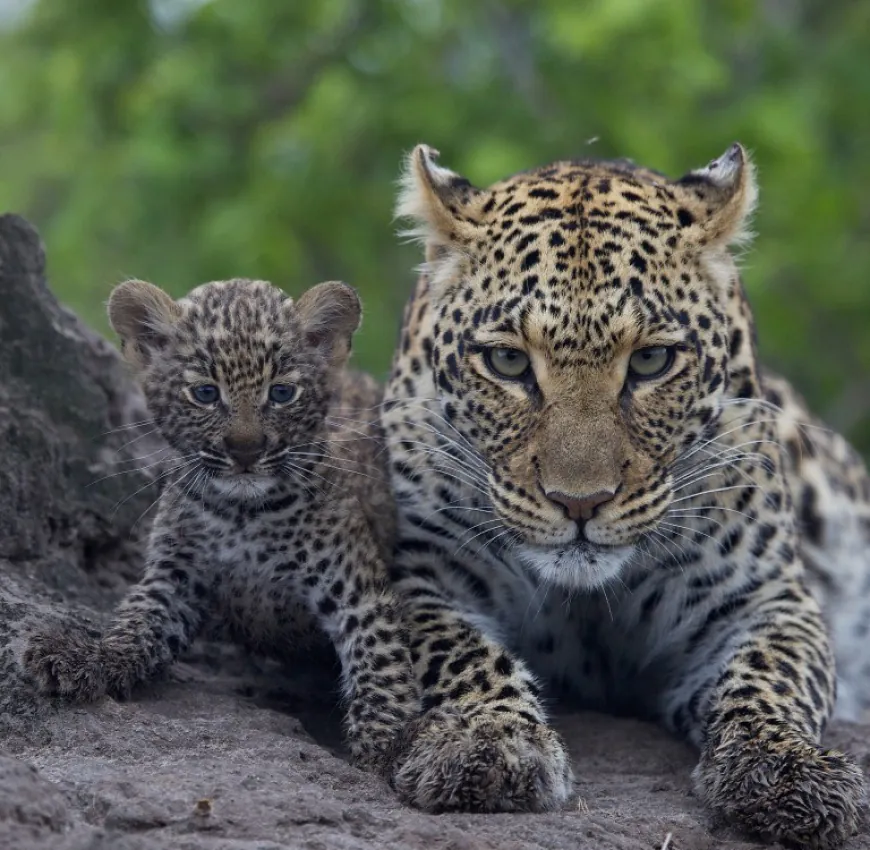
Capturing stunning photographs of leopards on safari requires the right equipment and techniques. Here's a guide to help you get the best shots of these elusive big cats:
Equipment Recommendation Camera Body High-resolution camera with fast autofocus (e.g., Sony Alpha 1) Lenses Telephoto zoom lens (e.g., 100-400mm or 200-600mm) Support Beanbag or monopod for stability Memory Cards Fast, high-capacity cards Accessories Lens hood, dust-proof camera bag When it comes to camera bodies, a high-resolution camera with fast autofocus capabilities is ideal for leopard photography. The Sony Alpha 1, for example, offers excellent resolution and performance for wildlife photography. The high megapixel count (50-60 megapixels) allows for significant cropping, which is often necessary when photographing distant subjects like leopards.
For lenses, a telephoto zoom lens in the range of 100-400mm or 200-600mm is recommended. These lenses provide the reach needed to capture detailed shots of leopards from a safe distance. Some photographers prefer to bring two camera bodies, each with a different lens, to avoid changing lenses in dusty conditions and to be prepared for various shooting scenarios.
To support your camera and lens, use a beanbag or monopod. Many safari vehicles in places like Londolozi have custom-built beanbag platforms, allowing for easy and effective camera support without the need for clumsy monopods.
Photography Techniques:
- Use a fast shutter speed: Leopards can move quickly, so a shutter speed of at least 1/1000th of a second is recommended to freeze action.
- Consider the background: Position yourself to capture the leopard against a clean, non-distracting background when possible.
- Focus on the eyes: Ensure the leopard's eyes are in sharp focus, as this is where viewers will naturally look first.
- Be patient: Leopard photography is often about capturing the single moment when the animal looks up, turns their head, or flicks their tail.
- Use spot metering: In challenging lighting conditions, spot meter off the leopard to ensure proper exposure of the subject.
- Shoot in RAW: This format gives you more flexibility in post-processing, especially for adjusting exposure and white balance.
- Be prepared for low-light situations: Leopards are often active in early morning or late afternoon. Use a higher ISO if needed to maintain a fast shutter speed.
- Capture behavior: Look for opportunities to photograph leopards engaging in interesting behaviors like climbing trees, stalking prey, or interacting with cubs.
- Consider the composition: Try to include the leopard's long tail in your shots, as it's a distinctive feature of these big cats.
- Take advantage of overcast days: Cloudy conditions can actually be ideal for leopard photography, as they reduce harsh shadows and bright highlights.
Remember, while getting the perfect shot is exciting, it's crucial to prioritize the well-being of the animals and adhere to ethical wildlife photography practices. Always follow the guidance of your safari guide and maintain a respectful distance from the leopards.
-
Unforgettable Leopard Encounters
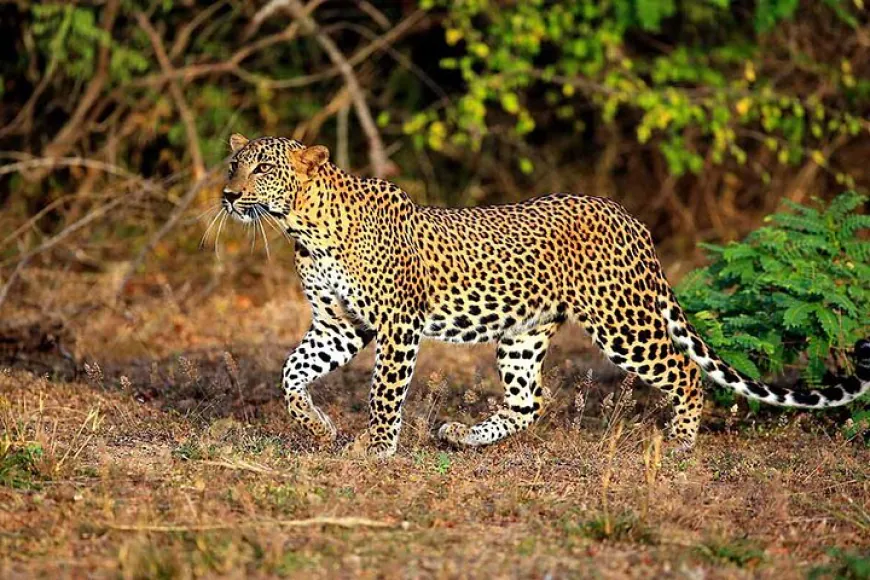
Sri Lanka's leopard safaris offer an unparalleled wildlife experience, with Yala National Park standing out as a premier destination for observing these magnificent big cats. Here's a recap of the key aspects of the leopard safari experience and why you should consider embarking on this adventure:
Unique Wildlife Encounters:
- Yala boasts one of the highest leopard densities in the world
- Over 100 individual leopards identified in Block 1 alone
- Opportunities to observe leopards in their natural habitat
Diverse Ecosystem:
- Home to the Ceylon Big Five: elephants, leopards, bears, wild water buffalos, and wild boars
- Over 200 species of resident birds, plus hundreds of migratory species
- Varied landscapes from shrub jungles to riparian gallery forests
Expert-Guided Safaris:
- Experienced naturalists and trackers increase chances of leopard sightings
- Customized vehicles for optimal wildlife viewing
- Insights into leopard behavior and ecology
Sustainable Tourism:
- Ethical safari practices minimize disturbance to wildlife
- Conservation efforts supported by responsible tourism
- Economic benefits for local communities
Photography Opportunities:
- Chance to capture stunning images of leopards and other wildlife
- Diverse landscapes provide beautiful backdrops
- Expert guides can help position vehicles for the best shots
Accommodation Options:
- Luxury tented camps offer immersive wilderness experiences
- Eco-friendly facilities blend with the natural environment
- Comfortable amenities enhance the overall safari experience
Experiencing Yala's leopards is more than just a wildlife encounter; it's an opportunity to witness one of nature's most elusive and beautiful creatures in its natural habitat. The thrill of spotting a leopard lounging on a tree branch or stalking through the underbrush is unmatched, creating memories that last a lifetime.
While sightings are never guaranteed, the anticipation and excitement of searching for leopards add to the adventure. Even if you don't see a leopard, the rich biodiversity of Yala ensures a rewarding safari experience filled with other fascinating wildlife encounters.
By participating in a leopard safari, you're also contributing to conservation efforts. Responsible tourism helps protect these magnificent animals and their habitats, ensuring future generations can continue to marvel at Sri Lanka's leopards.
Whether you're a wildlife enthusiast, a photography buff, or simply someone seeking a unique travel experience, a leopard safari in Yala National Park promises an unforgettable journey into the heart of Sri Lanka's wild spaces. So pack your binoculars, ready your camera, and prepare for an adventure that will leave you with a deep appreciation for the beauty and importance of these incredible big cats.
-
Leopard Safari FAQs
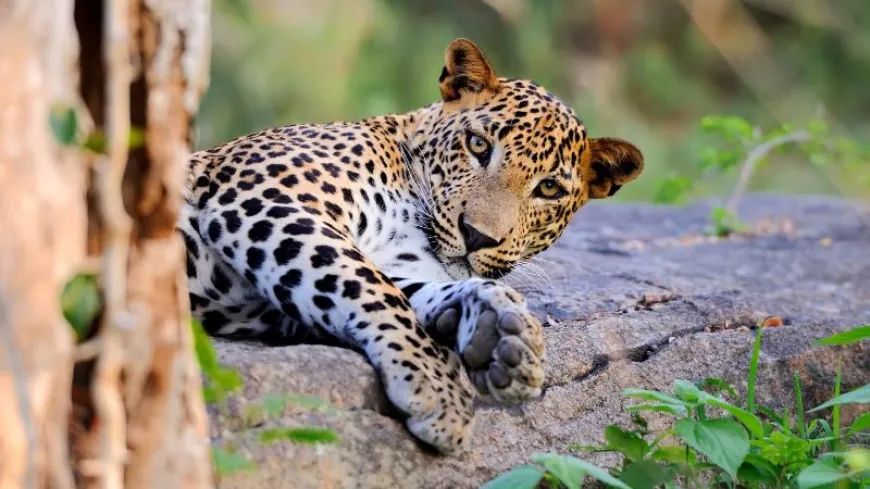
Here are some frequently asked questions (FAQs) about leopard safaris in Sri Lanka, with a focus on Yala National Park:
What is the best time of year for a leopard safari in Sri Lanka?
- The dry season from February to October is generally considered the best time for leopard safaris. April is particularly excellent, as the heat builds up, mirroring conditions favorable for big cat sightings.
What are the best times of day for leopard sightings?
- Early morning (6:00 AM to 10:00 AM) and late afternoon (2:30 PM to 6:00 PM) are ideal times for wildlife viewing, including leopards.
How long should I plan for a leopard safari?
- It's recommended to book multiple safaris to increase your chances of a leopard sighting. Two to three safaris are generally suggested for optimal opportunities.
What should I wear on a leopard safari?
- Wear lightweight, breathable clothing in neutral colors like khaki, beige, and green. Long sleeves and pants are recommended for protection against sun and insects.
What equipment should I bring for photography?
- A camera with a telephoto zoom lens (e.g., 100-400mm or 200-600mm) is ideal. Bring a beanbag or monopod for camera support.
Are leopard sightings guaranteed?
- While Yala has a high density of leopards, sightings are never guaranteed due to the animals' elusive nature. Patience and realistic expectations are key to enjoying the safari experience.
Is it safe to go on a leopard safari?
- Yes, when conducted with professional guides and following park regulations, leopard safaris are generally safe. Always follow the instructions of your safari guide for your safety and the well-being of the wildlife.
What other wildlife might I see on a leopard safari in Yala?
- Yala is home to the Ceylon Big Five: elephants, leopards, bears, wild water buffalos, and wild boars. The park also hosts over 200 species of birds and other diverse wildlife.
What type of accommodation is available for leopard safaris?
- Options range from luxury tented camps to eco-lodges, often located near national parks. Some camps offer glamping experiences with air-conditioned tents and eco-friendly facilities.
How can I ensure my safari is environmentally responsible?
- Choose operators that prioritize sustainable and ethical practices. Follow park rules and guidelines provided by your guide to minimize disturbance to wildlife and their habitats.
Remember that while these FAQs provide general information, it's always best to consult with your specific safari operator or tour guide for the most up-to-date and relevant details for your trip.
-
Connect With Yala
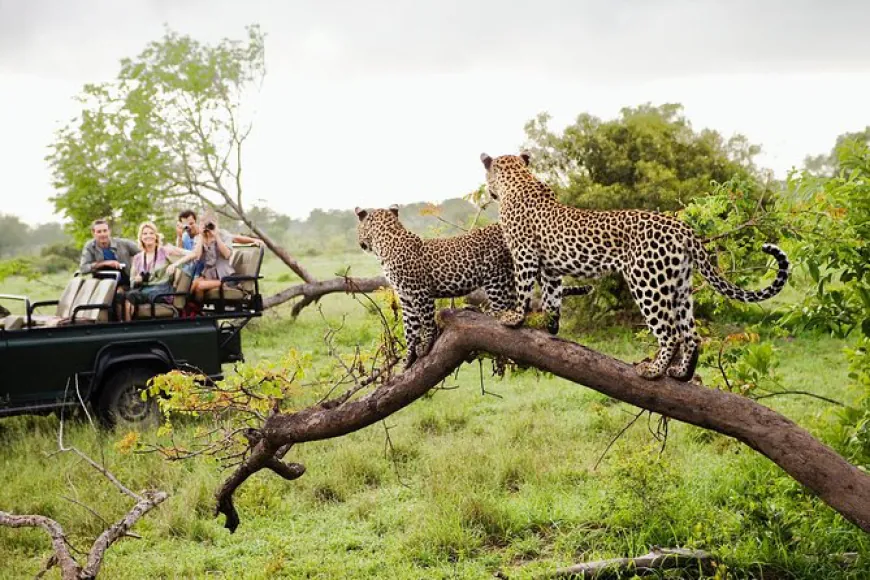
Stay Connected with Yala Sri Lanka
Contact us for more information:
- Email: [email protected]
- Phone: +94723456726
- Website: yalalk.com
Join our newsletter:
- Subscribe to receive the latest updates on leopard sightings, safari tips, and conservation news
- Stay informed about special offers and upcoming events at Yala National Park
Engage with our community:
- Comment on our blog posts to share your experiences or ask questions
- Share our articles on social media to spread awareness about Sri Lanka's incredible wildlife
Follow us on social media:
- Facebook: @YalaSriLanka
- Instagram: @yala_srilanka
- Twitter: @YalaSriLanka
Book your leopard safari:
- Visit our website at yalalk.com to explore safari packages and make reservations
- Contact our team for personalized safari itineraries and group bookings
Support conservation efforts:
- Learn about our ongoing conservation projects
- Donate to help protect Sri Lanka's leopards and their habitats
We value your feedback and experiences. Share your leopard safari stories with us and become part of our growing community of wildlife enthusiasts. Together, we can promote responsible tourism and ensure the preservation of Sri Lanka's magnificent leopards for generations to come.
What's Your Reaction?








































